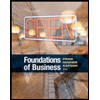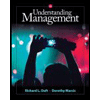Economic growth has slowed in recent years in many developed markets. In order to continue growing, large corporations are expanding into international emerging markets, such as China and India. And while some are targeting a new emerging middle class in these regions, many corporations like Procter & Gamble (P&G), Panasonic, and Unilever are searching for ways to reach a largely untapped demographic: the global poor who live on less than $2 per day. As discussed in the chapter, single- or small-use packaging has been a popular strategy for Unilever and other multinationals in rural and emerging markets. Other companies have tried to simplify more complex and costly designs to drive prices down for poor consumers. However, simplifying design and lowering other costs has not been enough to successfully penetrate the lowest level of the economic pyramid. Panasonic’s head of overseas consumer products, Hitoshi Otsuki, said that, “If it starts with a Japanese product or Japanese design, this [strategy of simplification] is impossible.” Otsuki’s statement indicates what many marketers for multinationals have discovered: Assumptions regarding the global poor as a consumer demographic need to be rethought. For example, poor customers don’t just seek out the cheapest, most efficient products. They have product aspirations and are concerned with aesthetics, such as beauty, too. P&G, one company that has experienced some success in poor markets, tries to take an innovative approach. CEO and Chairman Robert McDonald says P&G’s “strategy is not just diluting the top-tier product for the lower-end consumer. You have to discretely innovate for every one of those consumers on that economic curve, and if you don’t do that, you’ll fail.” Failure carries high stakes. Because the potential sales volumes from the $2-a-day consumer are particularly appealing, P&G and Unilever have invested in teams to do extensive lifestyle research in emerging markets. Panasonic’s lifestyle research is used to design and market specific products that are produced locally. P&G has invested $70 million in a regional research and development facility in Beijing in order to research, source, and develop products for the region without having to rely on the company’s Cincinnati, Ohio, headquarters across the globe. The investments have led to several changes in existing products, as well as new products designed specifically for poor, rural customers’ needs. P&G developed Tide Naturals without chemical irritants for people who must wash their clothes by hand. P&G also increased package size while keeping the existing price the same. Unilever’s India division developed Pureit, a $43 battery-powered water purification system. Pureit is now in over 3 million Indian homes, many of which are in poorer, hard-to-reach rural areas. Marketing these products to poor consumers requires direct marketing efforts. To market Pureit, Unilever has primarily relied on a network of 45,000 women from rural villages. These women offer in-home product demonstrations and sell door-to-door. P&G has also used demonstrators in India to educate potential consumers on the use and benefits of disposable diapers to families who have probably never used them. Despite these apparent successes and changes, there are risks. Lifestyle research and product development are more difficult and time consuming for this demographic, and new customers require more direct and intensive marketing efforts. Because of the time-intensive nature of this particularly poor market, it could be years before investments become profitable for the company. In the meantime, however, McDonald looks on the strategy as one of “purpose-inspired growth”—one designed to generate profitable business for P&G and improve its customers’ daily lives with quality products. As McDonald puts it, “It’s more than a noble idea. It’s a game-changing growth strategy and a powerful source of competitive advantage.” What methods for entering foreign markets did P&G and Unilever use for reaching the $2-aday consumer, and how did they do so? Discuss P&G’s global marketing mix. What type(s) of product and promotion strategies has it used? What about distribution and price? 3.Discuss some features of promotion that many companies are using to market to the $2-a-day consumer
Economic growth has slowed in recent years in many developed markets. In order to continue growing, large corporations are expanding into international emerging markets, such as China and India. And while some are targeting a new emerging middle class in these regions, many corporations like Procter & Gamble (P&G), Panasonic, and Unilever are searching for ways to reach a largely untapped demographic: the global poor who live on less
than $2 per day.
As discussed in the chapter, single- or small-use packaging has been a popular strategy for Unilever and other multinationals in rural and emerging markets. Other companies have tried to simplify more complex and costly designs to drive prices down for poor consumers. However, simplifying design and lowering other costs has not been enough to successfully penetrate the lowest level of the economic pyramid. Panasonic’s head of overseas consumer products, Hitoshi Otsuki, said that, “If it starts with a Japanese product or Japanese design, this [strategy of simplification] is impossible.”
Otsuki’s statement indicates what many marketers for multinationals have discovered: Assumptions regarding the global poor as a consumer demographic need to be rethought. For example, poor customers don’t just seek out the cheapest, most efficient products. They have product aspirations and are concerned with aesthetics, such as beauty, too. P&G, one company that has experienced some success in poor markets, tries to take an innovative approach. CEO and Chairman Robert McDonald says P&G’s “strategy is not just diluting the top-tier product for the lower-end consumer. You have to discretely innovate for every one of those consumers on that economic curve, and if you don’t do that, you’ll fail.” Failure carries high stakes. Because the potential sales volumes from the $2-a-day consumer are particularly appealing, P&G and Unilever have invested in teams to do extensive lifestyle research in emerging markets.
Panasonic’s lifestyle research is used to design and market specific products that are produced locally. P&G has invested $70 million in a regional research and development facility in Beijing in order to research, source, and develop products for the region without having to rely on the company’s Cincinnati, Ohio, headquarters across the globe. The investments have led to several changes in existing products, as well as new products designed specifically for poor, rural customers’ needs. P&G developed Tide Naturals without chemical irritants for people who must wash their clothes by hand. P&G also increased package size while keeping the existing price the same. Unilever’s India division developed Pureit, a $43 battery-powered water purification system. Pureit is now in over 3 million Indian homes, many of which are in poorer, hard-to-reach rural areas. Marketing these products to poor consumers requires direct marketing efforts. To market Pureit, Unilever has primarily relied on a network of 45,000 women from rural villages. These women offer in-home product demonstrations and sell door-to-door. P&G has also used demonstrators in India to educate potential consumers on the use and benefits of disposable diapers to families who have probably never used them. Despite these apparent successes and changes, there are risks. Lifestyle research and product development are more difficult and time consuming for this demographic, and new customers require more direct and intensive marketing efforts. Because of the time-intensive nature of this particularly poor market, it could be years before investments become profitable for the company. In the meantime, however, McDonald looks on the strategy as one of “purpose-inspired growth”—one
designed to generate profitable business for P&G and improve its customers’ daily lives with quality products. As McDonald puts it, “It’s more than a noble idea. It’s a game-changing growth
strategy and a powerful source of competitive advantage.”
- What methods for entering foreign markets did P&G and Unilever use for reaching the $2-aday consumer, and how did they do so?
- Discuss P&G’s global marketing mix. What type(s) of product and promotion strategies has it used? What about distribution and price?
|
3.Discuss some features of promotion that many companies are using to market to the $2-a-day consumer |
Step by step
Solved in 2 steps









